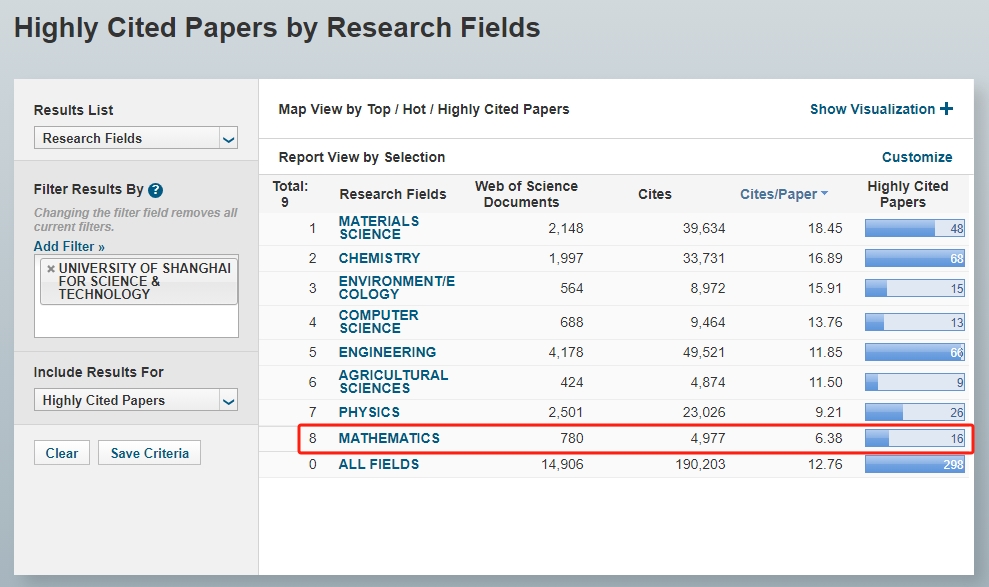In November of 2023, the latest Essential Science Indicators (ESI) shows that for the first time the discipline of mathematics enters among top 1% in ESI, becoming the eighth discipline to do so from USST.
In this issue, engineering science of USST enters among top 1.13‰, ranking 264rd out of 2335 research institutes whose engineering science cited papers enters among top 1%. Materials science of USST enters among top 2.89‰, ranking 388th out of 1342 research institutes whose materials science cited papers enters among top 1%. Chemical science of USST enters among top 3.65‰, ranking 677th out of 1854 research institutes whose chemical science also enters among top 1%. Computer science of USST ranks 411th out of 751 research institutes whose computer science also enters among top 1%. Environment/Ecology Science of USST ranks 1199th out of 1811 research institutes whose environment/biology science also enters among top 1%. Agricultural Science of USST ranks 841st out of 1197 research institutes whose agricultural science also enters among top 1%. Physics Science ranks 841st out of 899 research institutes. Mathematics Science ranks 370th out of 371 research institutes.
In recent years, the Mathematics Science has shaped a high-level faculty team of USST, which has been conducting the scientific research. They have published more than 200 high-level papers and 20 highly-cited papers in top mathematics-related journals such as SIAM J. Optim and J. Differential Equations. The USST's result of connotative construction is characterized by the mathematics science among top 1% in ESI. At present, USST’s basic science like discipline of mathematics, physics and chemistry enter top among 1% in ESI.
ESI is an econometric analysis database based on the ISI citation index database SCI and SSCI. ESI is an authoritative retrieval tool for collecting and reflecting citations of papers in major disciplines in the world. ESI has become an important tool for evaluating the international academic level and influence of universities, academic institutions, and even countries and regions. Entering among top 1% in ESI reflects the paper quality and academic competitiveness of scientific research institutions of universities.


 Home
·
News & Events
·
Content
Home
·
News & Events
·
Content

